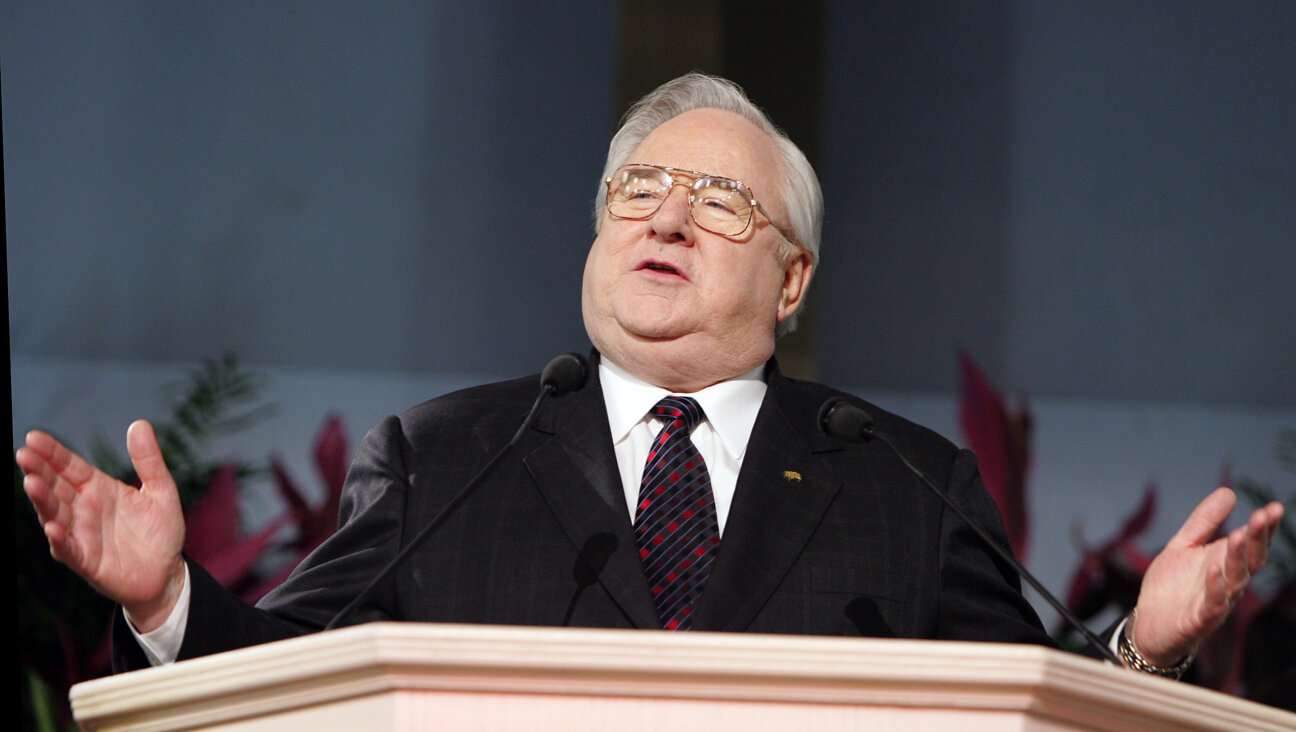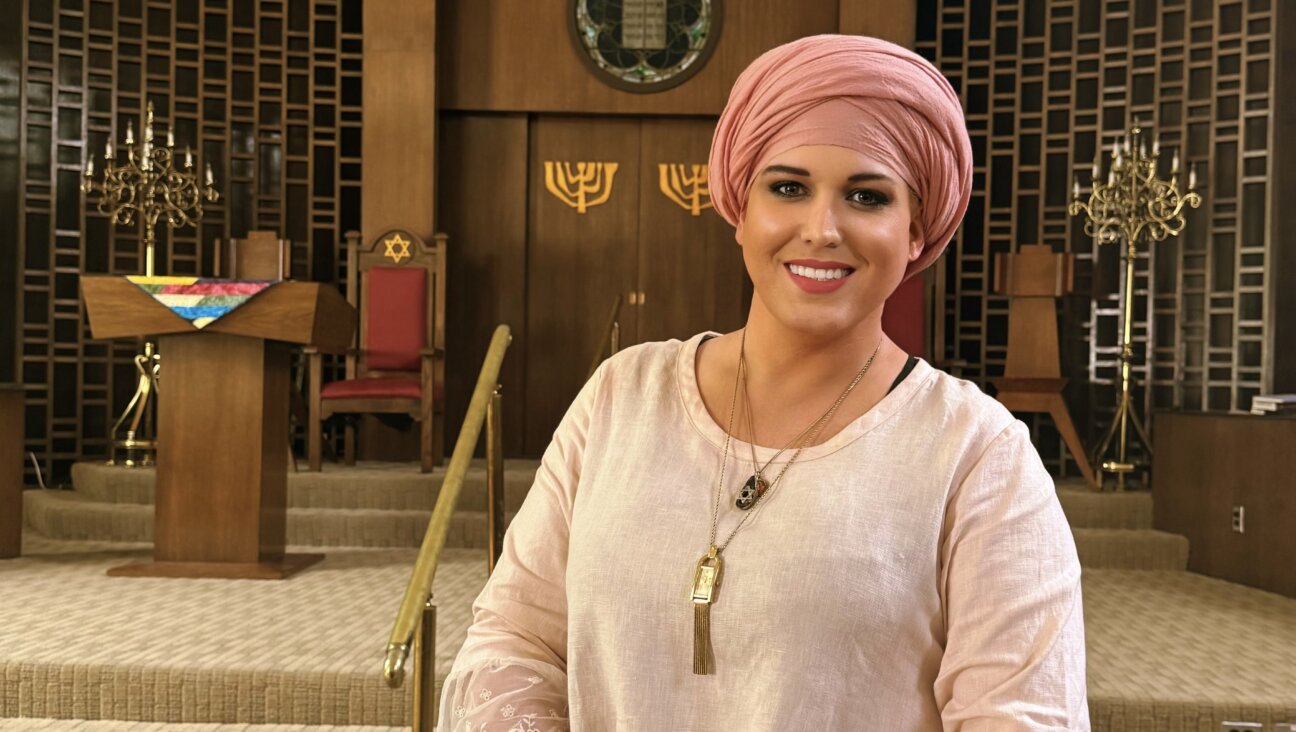Everything You Wanted To Know About Menorahs But Were Afraid To Ask

Graphic by Angelie Zaslavsky
Hanukkah does not begin until December 24, but the historian Steven Fine has already captured the holiday mood in “The Menorah: From the Bible to Modern Israel.” Among other things, Fine’s book, published by Harvard University Press, explains the distinction between the seven-branched menorah used in the ancient Temple and the hanukiah, or nine-branched candelabrum lit during Hanukkah. A professor at Yeshiva University, and head of the Arch of Titus Digital Restoration Project, Fine spoke to the Forward’s Benjamin Ivry about menorah history and lore.
Benjamin Ivry: “The Menorah” debunks the myth that the gold menorah from the Second Temple is hidden in the basement of the Vatican. Is there any modern historical precedent for the Vatican collections concealing works belonging to other religions?
Steven Fine: No, there isn’t. The ’60s was a period when there were a lot of urban myths floating around culture. For American Jewry in the ’60s, we were just hitting a renaissance. Holocaust survivors were establishing themselves in America, and all sorts of interesting transitions were going on. Jews have been suspicious of the Vatican for a long time. For most of Jewish history in the West, they’ve had every good reason to be. After all, children were taken from the ghetto, books were acquired by any means and, all of a sudden, [Pope] John XXIII began the Vatican II process, and Catholics were being told that it was a sin to hate Jews, and Jews were their older brothers. The idea that goyim were going to stop being bad goyim was quite astonishing. The idea that the Catholic Church would change was more than many people could fathom.
You cite a late 19th- and early 20th- century tradition of representing menorahs in Catholic contexts, such as churches and cemeteries. Did Christian iconography make the menorah seem like an evil that had to be defeated?
For traditional Christian iconography from the Byzantine to the modern eras, the menorah is a supersession thing, rightfully transferred to the new Temple. Christians owned this the way they owned the Old Testament. The Jews were defeated, God gave up on them, the Romans beat them, and [Christians were] the descendants of the Romans. At the end of the 19th century, the Jewish branding on the menorah began. Sometimes the Christian use of the menorah can love you to death. Maintaining your identity is a really complex thing.
Nathaniel Hawthorne’s “The Marble Faun” repeats the legend that the menorah from the Temple is now buried in the bed of the Tiber River in Italy. Since the 1700s, Roman Jews have sometimes asked the Vatican for permission to excavate parts of the Tiber. Would there be any point in such an archaeological dig today?
Look, anybody who could dredge the Tiber would find incredible stuff down there. There’s all kinds of stuff under the water, but there’s no reason to think Constantine threw the menorah into the river. There’s no reason to think that this Roman gold would have been preserved when the most significant Roman gold that was preserved is a cup in the Getty Museum. Roman gold, like all gold, gets melted down.
In 2014 you told one reporter: “Gold doesn’t disappear. Maybe you’re wearing the menorah in your ring…. That’s a really unsatisfying answer for a lot of people.” Why unsatisfying?
You know, relics are important things, and this is a divinely ordained Second Temple relic. This is the menorah, and it’s so well described, and pictures have been made of it for 2,000 years by Jews, Christians and Muslims. It’s one of those cultural icons. To say that Jews have no icons is untrue. A menorah is a relic, and people don’t want to lose it. As long as it isn’t lost, people think they are not lost, too, as a metaphor of the Eternal People. I’m the first one who would love to find it, but my fantasies and my scholarship have to control each other.
Stefan Zweig’s novel “Buried Candelabrum” has the menorah buried by Jews on the road between Jaffa and Jerusalem, while Robert Graves’s “Count Belisarius” alleges it was returned to Jerusalem under Christian ownership. No need to test these theories either?
No, no. There is no source that says that it came back to Israel and floated around. The question is how you read very dead texts and what you bring to them. I tend to bring a close reading that doesn’t like to extrapolate a lot. Novelists don’t have that problem, but the line between scholars and novelists is sometimes very, very thin.
In 1921, the architect Josef Tischler designed the Tel Aviv neighborhood of Neve Sha’anan with streets shaped in the form of a menorah. This design was only partially executed. Nathan Harpaz’s “Zionist Architecture and Town Planning” points out that the design would have been “invisible except on a map.”
Christians don’t know that they’re walking in towns shaped like a cross. Lots of stuff gets embedded in city planning that folks don’t always recognize. They surround themselves in the menorah to create a visual reality. You don’t have to see it; knowing it or discovering it is enough. Anyone who looks at a map of central Tel Aviv today will see that this neighborhood is different.
in 2013, Asher Weintraub, a 9-year-old boy from Manhattan, devised a “menurkey,” a turkey-shaped menorah. Are menorahs appetizing, or is eating one frowned upon as a sign of disrespect?
I don’t think it’s frowned upon. It’s fun and silly. I don’t remember seeing a menorah-shaped challah in 18th-century traditional Jewish culture. This menorah-on-the-brain stuff is pretty modern. In a world where you have to have visual distinctiveness and identify yourself, it becomes important to have these kinds of visual markers. The great thing about a menorah is, no matter how much you eat it, is still identifiable as a menorah. When I find a small fragment at an archaeological dig, it still looks like it is from a menorah.
The Israeli sculptor Yaacov Agam’s 32-foot-high, 2-ton steel menorah in New York has enough open space and spare lines to pass as an abstract sculpture first and a menorah second. Is there any rule that a hanukiah must look like a hanukiah?
Well, first of all, in the modern world there is a distinction between the menorah from the Temple and the Hanukkah lamp, because there are too many things that are called a menorah. So the connection between the modern Hanukkah lamp and the biblical menorah was broken down when the language broke down, with the Hebrew term hanukiah. From the Jewish legal standpoint, as long as there are eight lamps in a row, it doesn’t matter what it looks like. But from a traditional standpoint, does it express continuity? Agam’s thing is fine; it’s not Jewishly exciting in that way, maybe in other ways.
In a 1989, the Supreme Court ruled that the public display of menorahs was not an endorsement of the Jewish faith, but part of seasonal displays like Christmas trees, which have attained a secular status in American society. Are menorahs secular?
I’ve had this question for a long time. The legal reasoning for allowing menorahs [in public] is that the menorah is sort of like a Christmas tree. The cross is the object that goes next to the menorah, not the Christmas tree. Especially in America. Where I grew up, a Christmas tree is taboo. It’s a Christian symbol. It’s that thing we don’t have. It’s goyish. If I make a menorah and it breaks, I can just throw it out. It has no religious value. It’s just a menorah. As much as it may be an icon, it’s just a nonsanctified thing, and in that way it’s parallel to a Christmas tree. If I were to bring a [Christmas tree] into the [Bronx’s] Riverdale Orthodox community, we would no longer be members. They wouldn’t throw us out, but they would look at us strangely.























